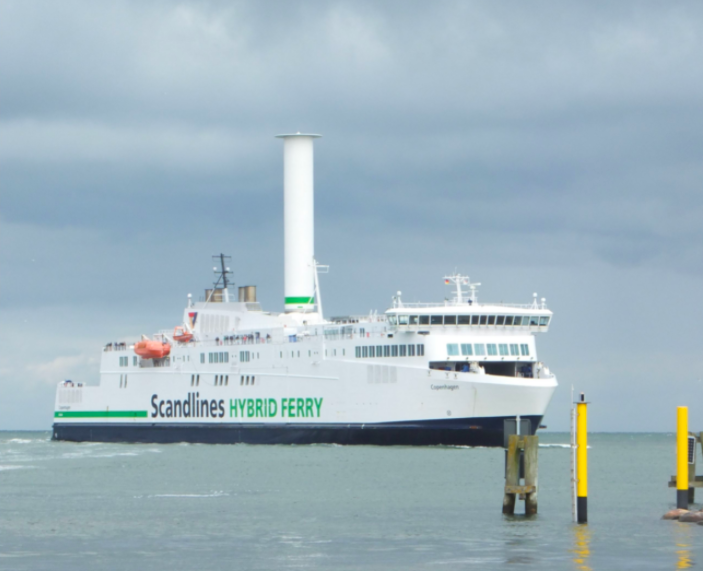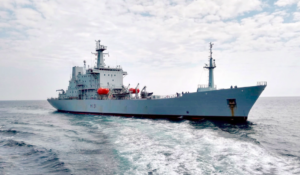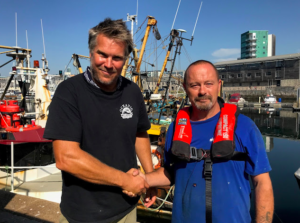Scandlines prepares second ferry for rotor sail installation

Following the successful installation of the Norsepower rotor sail on the hybrid ferry M/V Copenhagen in 2020, and a year of demonstrated results, Scandlines has prepared the sister ferry M/V Berlin for its own rotor sail installation.
“We expected the M/V Copenhagen rotor sail to provide a 4 – 5% CO2 reduction,” says Scandlines’ COO, Michael Guldmann Petersen. “That expectation has been met, so we have now taken the next step and prepared the sister ferry M/V Berlin for installation.” Scandlines has had more than a year to collect data on how the rotor sail works and the affects it has.
The M/V Berlin operates the route between Rostock and Gedser. The route is perfectly located to meet the requirement that gives the greatest benefit of the rotor sail for propulsion, says Scandlines, namely that the wind must be perpendicular to the sail.
“Our route across the Baltic Sea is north/south bound, and the prevailing wind is from the west or east. In other words, our rotor sails have optimal conditions,” says Petersen.
Several of Scandlines’ other green initiatives on the way to emission-free ferries are not visible to the outside world, as they are below the water surface. A rotor sail that protrudes 30 metres into the air, on the other hand, is a very clear signal of a green vision.
“There has generally been a lot of interest in the rotor sail – and in the beginning even wonder among the passengers about the ‘chimney.’ Most of the crew are now also masters of technical explanations that are easy to understand,” says Petersen.
The preparation for the rotor sail includes building a steel foundation on the ferry. The initial work took place when the M/V Berlin was on a planned yard stay at Remontowa in Poland at the end of May. The installation of the rotor sail itself is scheduled for 2022. M/V Copenhagen is pictured above.










